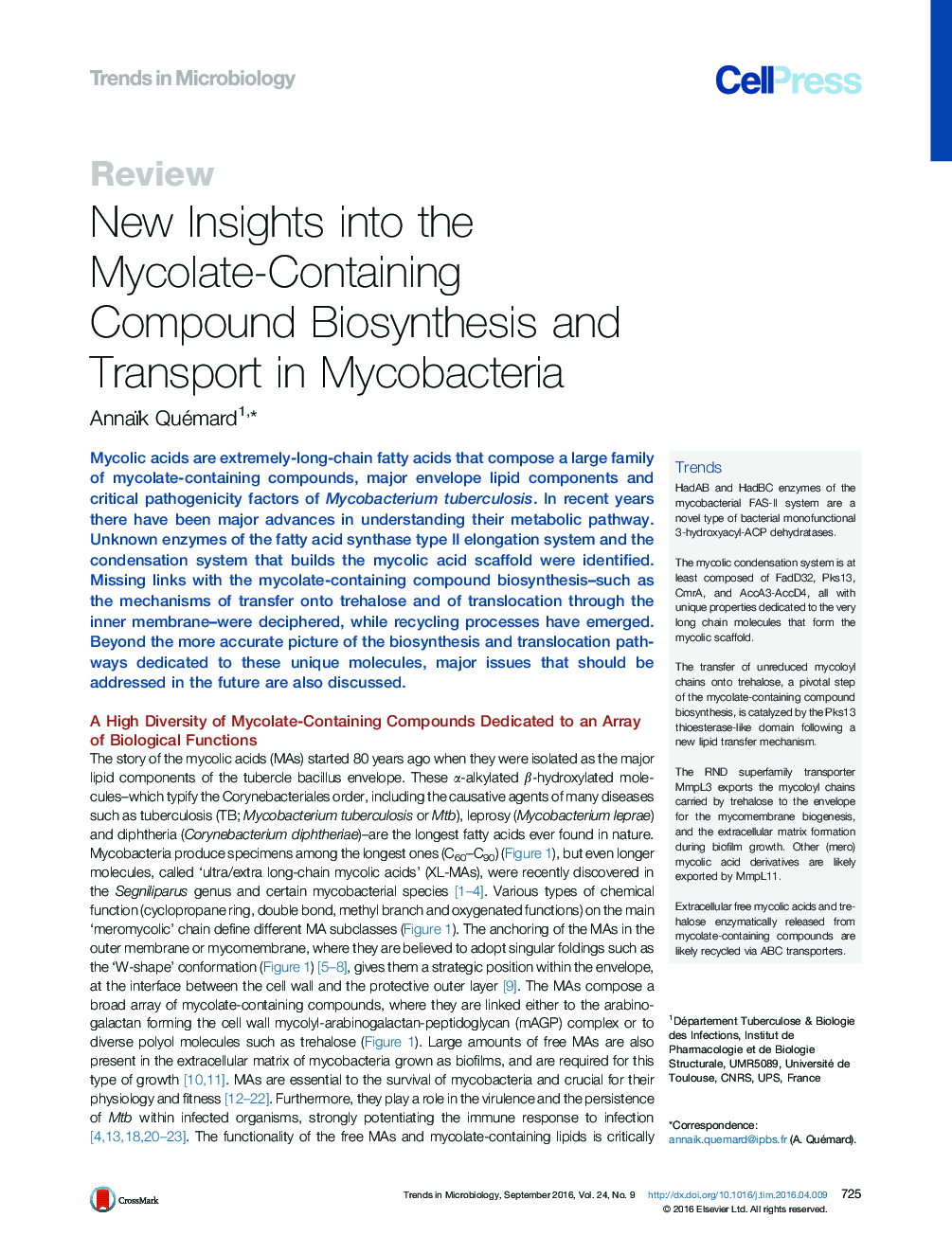| Article ID | Journal | Published Year | Pages | File Type |
|---|---|---|---|---|
| 3421694 | Trends in Microbiology | 2016 | 14 Pages |
Mycolic acids are extremely-long-chain fatty acids that compose a large family of mycolate-containing compounds, major envelope lipid components and critical pathogenicity factors of Mycobacterium tuberculosis. In recent years there have been major advances in understanding their metabolic pathway. Unknown enzymes of the fatty acid synthase type II elongation system and the condensation system that builds the mycolic acid scaffold were identified. Missing links with the mycolate-containing compound biosynthesis–such as the mechanisms of transfer onto trehalose and of translocation through the inner membrane–were deciphered, while recycling processes have emerged. Beyond the more accurate picture of the biosynthesis and translocation pathways dedicated to these unique molecules, major issues that should be addressed in the future are also discussed.
TrendsHadAB and HadBC enzymes of the mycobacterial FAS-II system are a novel type of bacterial monofunctional 3-hydroxyacyl-ACP dehydratases.The mycolic condensation system is at least composed of FadD32, Pks13, CmrA, and AccA3-AccD4, all with unique properties dedicated to the very long chain molecules that form the mycolic scaffold.The transfer of unreduced mycoloyl chains onto trehalose, a pivotal step of the mycolate-containing compound biosynthesis, is catalyzed by the Pks13 thioesterase-like domain following a new lipid transfer mechanism.The RND superfamily transporter MmpL3 exports the mycoloyl chains carried by trehalose to the envelope for the mycomembrane biogenesis, and the extracellular matrix formation during biofilm growth. Other (mero)mycolic acid derivatives are likely exported by MmpL11.Extracellular free mycolic acids and trehalose enzymatically released from mycolate-containing compounds are likely recycled via ABC transporters.
